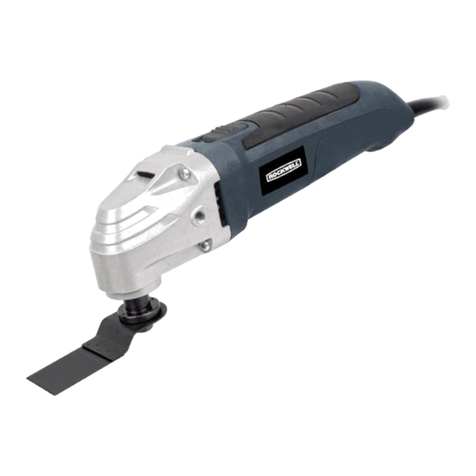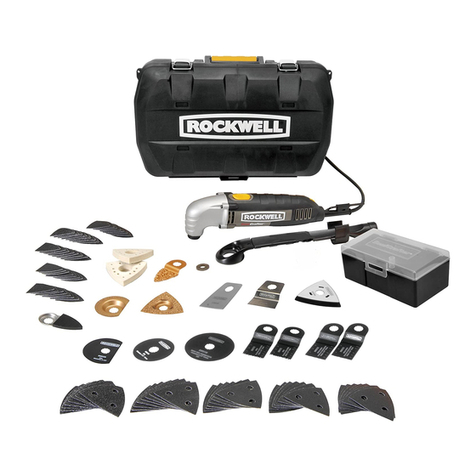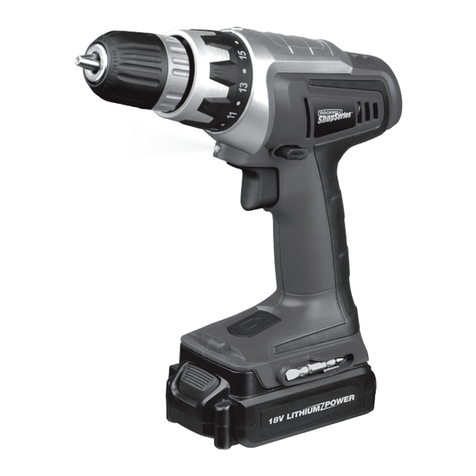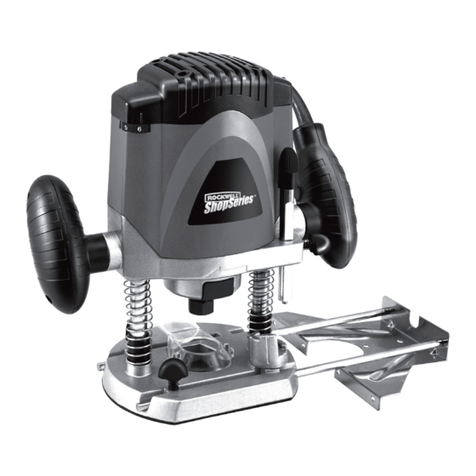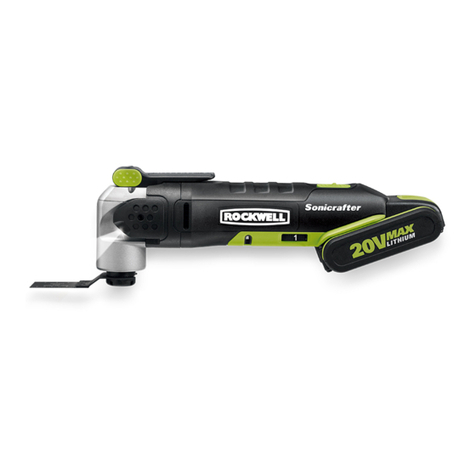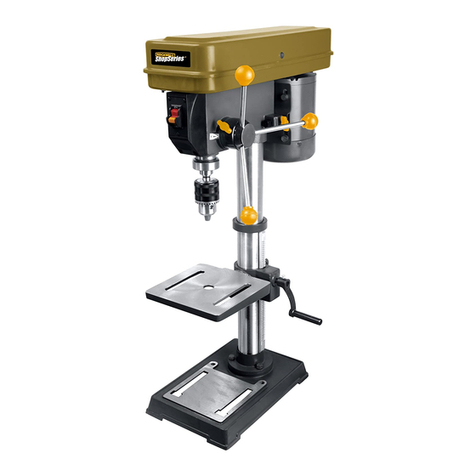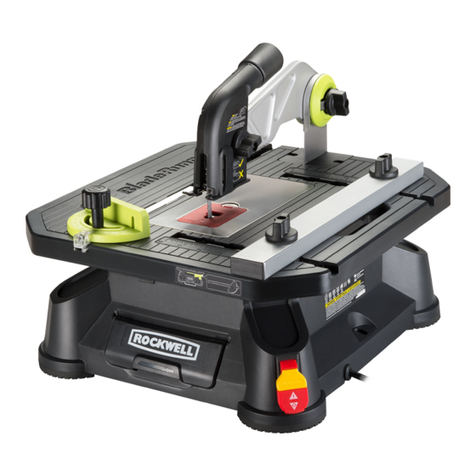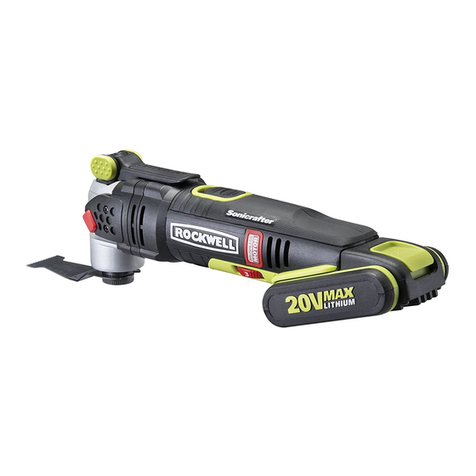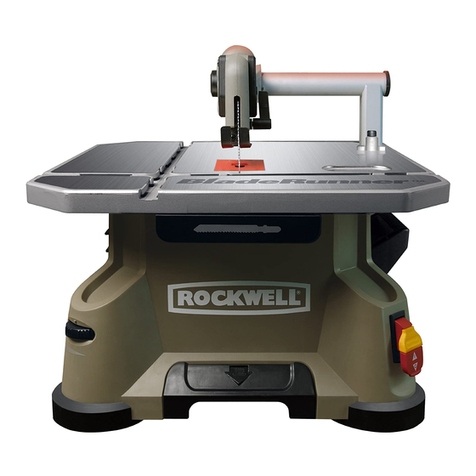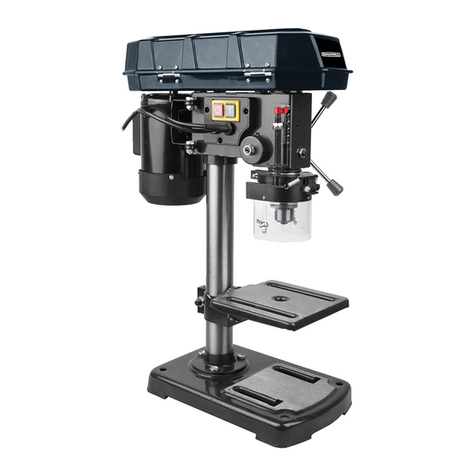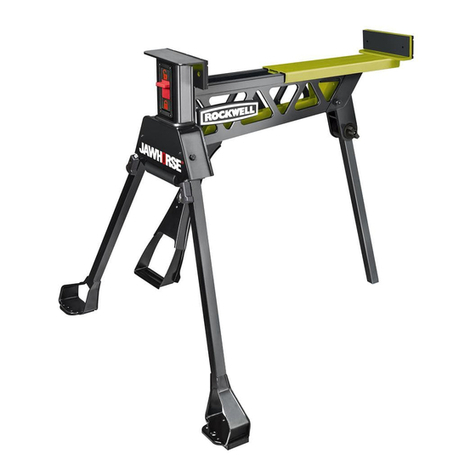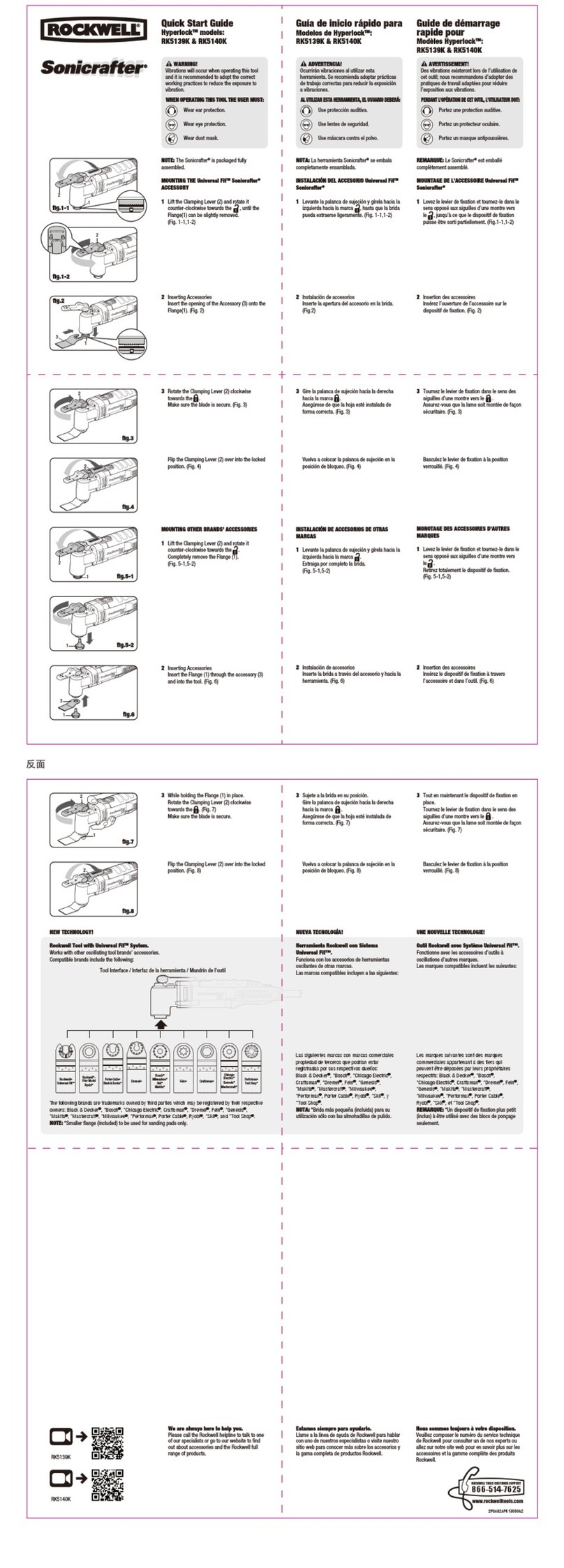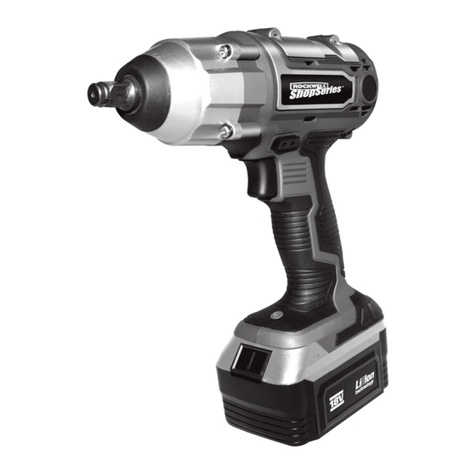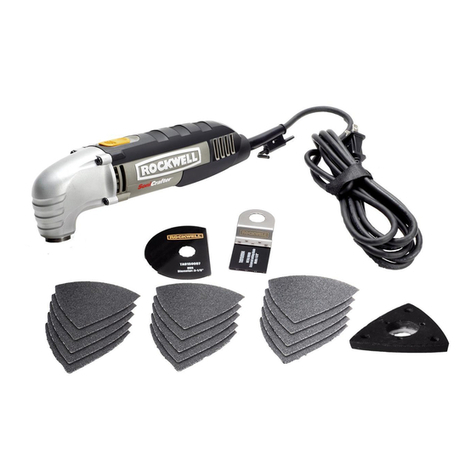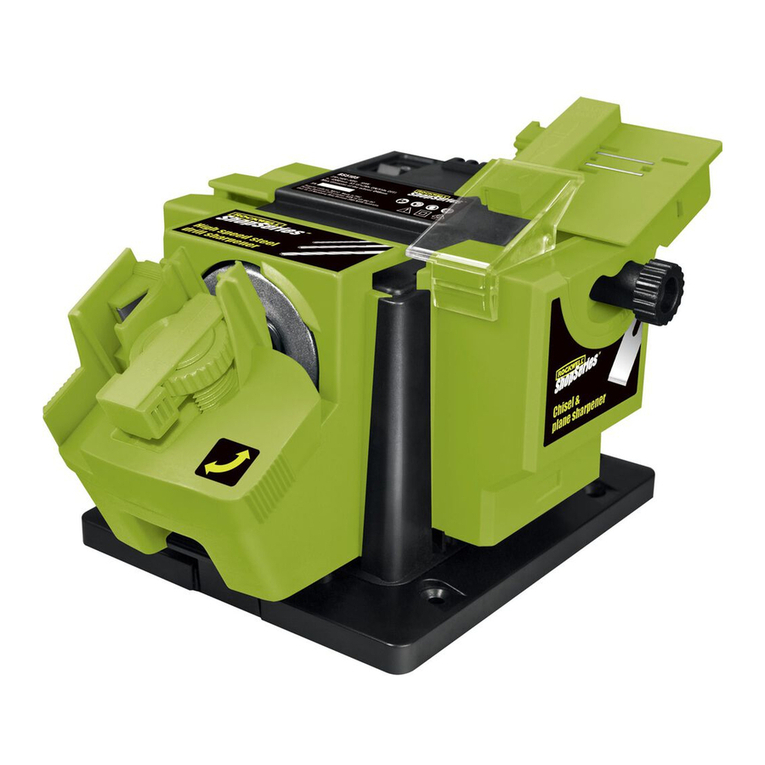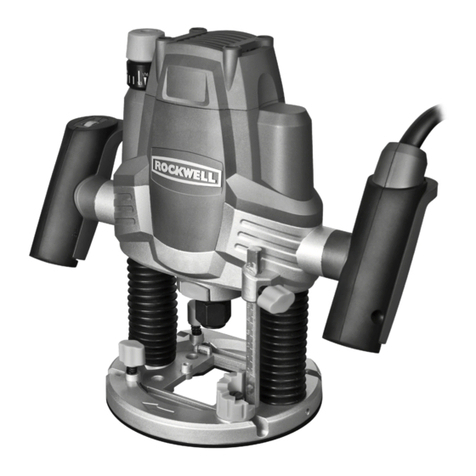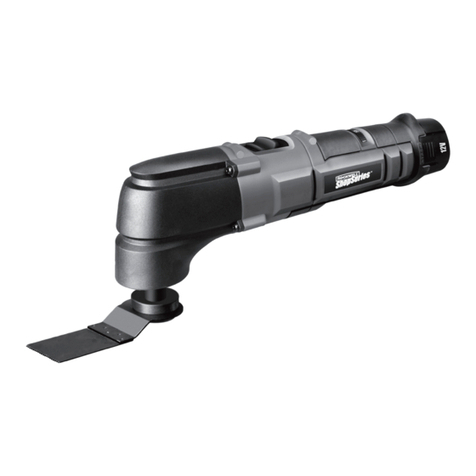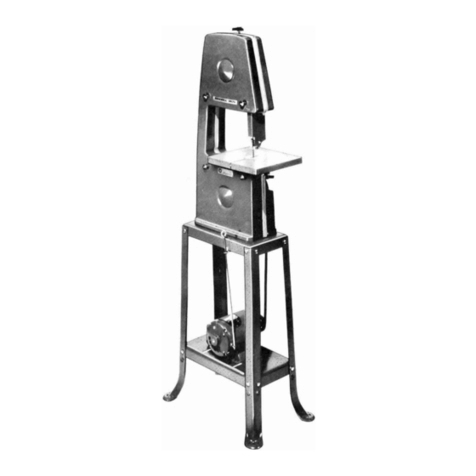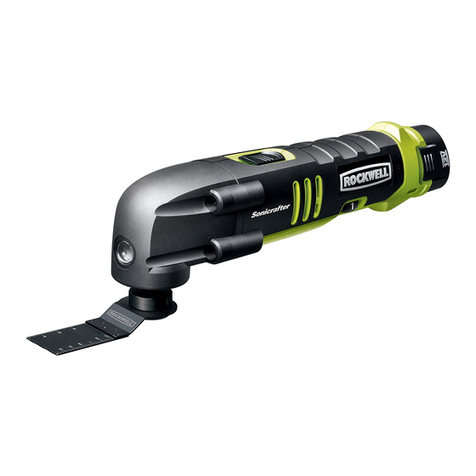ADJUSTING SPINDLE RETURN SPRING
For the purpose of automatically returning the
spindle upward after the hole has been drilled, a
clock spring is provided enclosed in the clock spring
using (70). This spring has been properly adjusted
1_-. the factory and should not be disturbed unless
absolutely necessary. lf at any time it is necessary
to adjust it proceed as follows:
1. To increase the tension of the spring, turn the
screw (73), which is located underneath the head,
clockwise. CAUTION: BE CAREFUL NOT TO BOT-
TOM RETURN SPRING WHILE TURNING SCREW
(73), CLOCKWTSE, THERE SHOULD BE ENOUGH
SLACK LEFT IN SPRING TO PERMIT LOWERING
THE SPINDLE THE FULL AMOUNT OF TRAVEL.
2. To decrease tension of the spring, turn the screw
(73), cou nterclockwise.
3. The tension of the spring can be tested by pulling
down the hand feed lever (48), and testing to see
if the quill wlll return to the up position. Be sure
the quill locking lever (72), is loose while testing.
NOTE: Before determining if this adjustment is
necessary, make sure the stop rod (94) runs f reely
up and down and is not twisted in the slot or
guide of the head casting.
DRILLING HOLES TO DEPTH
When drilling one or two holes to a predetermined
depth, the graduations on the face of the depth stop
rod (94), can be used.
When drilling a number of holes to a predetermined
depth, or if a more exact setting is required, turn
nut (94) down to the desired depth and lock.
QUILL ADJUSTMENTS
The spindle is raised and lowered by the hand
lever (48). The quill can be locked at any desired
point in its travel by tightening the quill lever (72).
This is an especially desirable feature for router and
shaper work.
The adjusting screw (56) and nut (74) are set at
the factory to give the quill the proper sliding fit in
the head casting. After long service play between
quill and head casting can be removed without the
need to replace these parts. The nut (74) is loosened,
adjustment is made with the screw (56), and the nut
is again tightened to prevent the screw from turning.
'ld the screw with a screwdriver when nut is tight-
rd, and check by moving the quill up and down
Vveral times to be sure the quill does not bind. This
adjustment should be made with the stop rod (94),
removed,
REGLAGE DU RESSORT DE RAPPEL
DE LA BROCHE
Dans le but de relever automatiquement Ia broche
une fois que le trou a 6t6 perc6, un ressort de rappel
est enferm6 dans le boitier (70). Ce ressort a 6t6
regl6 A I'usine. ll ne faut absolument pas y toucher
d moins que cela soit absolument n6cessaire. S'il
devenait n6cessaire de le r6gler, procedez comme
suit:
1. Pour augmenter la tension du ressort, tournez la
vis (73), qui est situee sous la tdte, d droite.
ATTENTION: EN SERRANT LA VIS (73) A DROITE,
FAITES BIEN ATTENTION DE NE PAS TROP
SERRER LE RESSORT DE RAPPEL. IL DEVRA
Y AVOIR SUFFISAMMENT DE JEU DANS LE RES-
SORT POUR PERMETTRE DE RABAISSER LA
BROCHE SUR TOUTE SA COURSE.
2. Pour diminuer la tension du ressort, tournez Ia vis
(73) d gauche.
3. La tension du ressort se v6rifie en abaissant le
levier d'avance d la main (a8) et en s'assurant
que le fourreau retourne d la position sup6rieure.
Assurez-vous que le levier de blocage du four-
reau (72) est desserr6 pendant que vous faites
cette v6rification, REMARQUE: Avant de d6ter-
miner si un r6glage est n6cessaire, assurez-vous
que la tige d'arr6t (94) se d6place Iibrement de
haut en bas et qu'elle n'est pas tordue dans la
fente ou guide de la t6te.
POUR PERCER LES TROUS A PROFONDEUR
Pour percer un ou plusieurs trous A une profon-
deur pr6d6termin6e, les graduations sur la face avant
de la tige d'arret (94) peuvent 6tre utilis6es.
Lorsque vous percer un certain nombre de trous
d une profondeur pr6d6termin6e, ou si plus d'un
r6glage pr6cis est n6cessaire, tournez les 6crou (94)
ii la profondeur desir6e et bloquez.
REGLAGES Du FoURREAU
La broche se reldve et s'abaisse avec le levier ir
main (48). Le fourreau peut 6tre bloqu6 A n'importe
quel point d6sir6 dans sa course, en serrant le levier
du fourreau (72). Ceci repr6sente une caract6ristique
trds appr6ciable pour le toupillage et le fagonnage.
La vis de 169lage (56) et I'6crou (74) ont 5t6 169l6s
ir l'usine pour assurer la course ad6quate du fourreau
dans Ia t6te. Aprds un certain temps, le jeu entre le
fourreau et la t6te peut 6tre elimin6 sans avoir d rem-
placer ces pidces. L'6crou (74) se desserre et le
r6glage se fait avec la vis (56). L'6crou est ensuite
resserr6 pour 6viter d la vis de tourner. Maintenez
la vis avec un tournevis lorsque vous serrez l'6crou,
et d6placez le fourreau de haut en bas plusieurs fois
pour vous assurer qu'il ne plie pas. Ce 169lage doit
6tre fait lorsque la tige d'arrOt (94) est d6mont6e.
